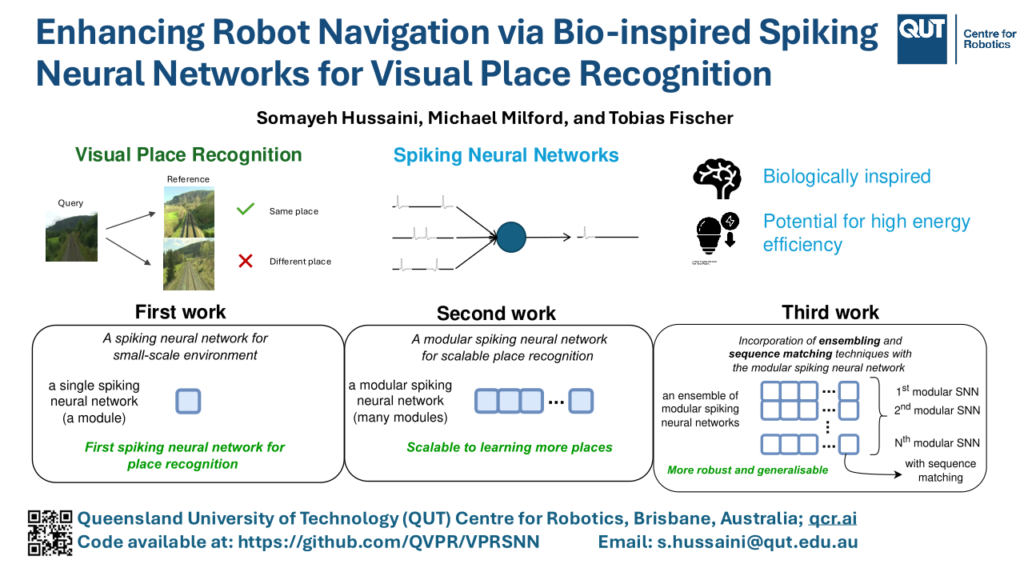When: Thursday 23rd of Oct, 1:30pm AEST
Where: This seminar will be partially presented at the ACFR seminar area, J04 lvl 2 (Rose St Building) and partially online via Zoom. RSVP
Speaker: Somayeh Hussaini
Title: Enhancing Robot Navigation via Bio-inspired Spiking Neural Networks for Visual Place Recognition

Abstract:
In this talk, I’ll discuss the use of Spiking Neural Networks (SNNs) to enhance Visual Place Recognition (VPR) for autonomous robot navigation. VPR involves matching a query image of a place to its corresponding reference image from a reference dataset generated from pre-mapping an environment. It faces challenges such as viewpoint changes, appearance variations, and perceptual aliasing. We employ SNNs as an alternative to conventional computing due to their potential for high energy efficiency and low latency, particularly when deployed on neuromorphic hardware. By developing the first SNNs for VPR and integrating conventional machine learning enhancement techniques such as sequence matching, we aim to improve scalability and robustness across diverse environments. Although there are current limitations in deploying our SNN-based approaches on neuromorphic hardware, our work highlights the potential of SNNs for VPR in mobile robots.
Bio:
Somayeh graduated with a Bachelor of Engineering (Honours) in Mechatronics with First Class Honours from QUT in 2020. In 2021, she began her PhD, focusing on biologically inspired spiking neural networks for scalable visual place recognition, under the supervision of Dr. Tobias Fischer and Professor Michael Milford. Her PhD is currently under external examination. She was a QUT finalist in the 2021 3MT Competition and a finalist in the 2022 Queensland Women in STEM Prize. She has published her research in the IEEE Robotics and Automation Letters (RAL) journal and presented at the International Conference on Robotics and Automation (ICRA) in 2022 and 2023. In 2024, she transitioned into a postdoctoral research fellow role within the same group at the QUT Centre for Robotics, where she continues to explore visual place recognition through both bio-inspired and conventional techniques. Her research interests include robotics, computer vision, and neuromorphic computing.